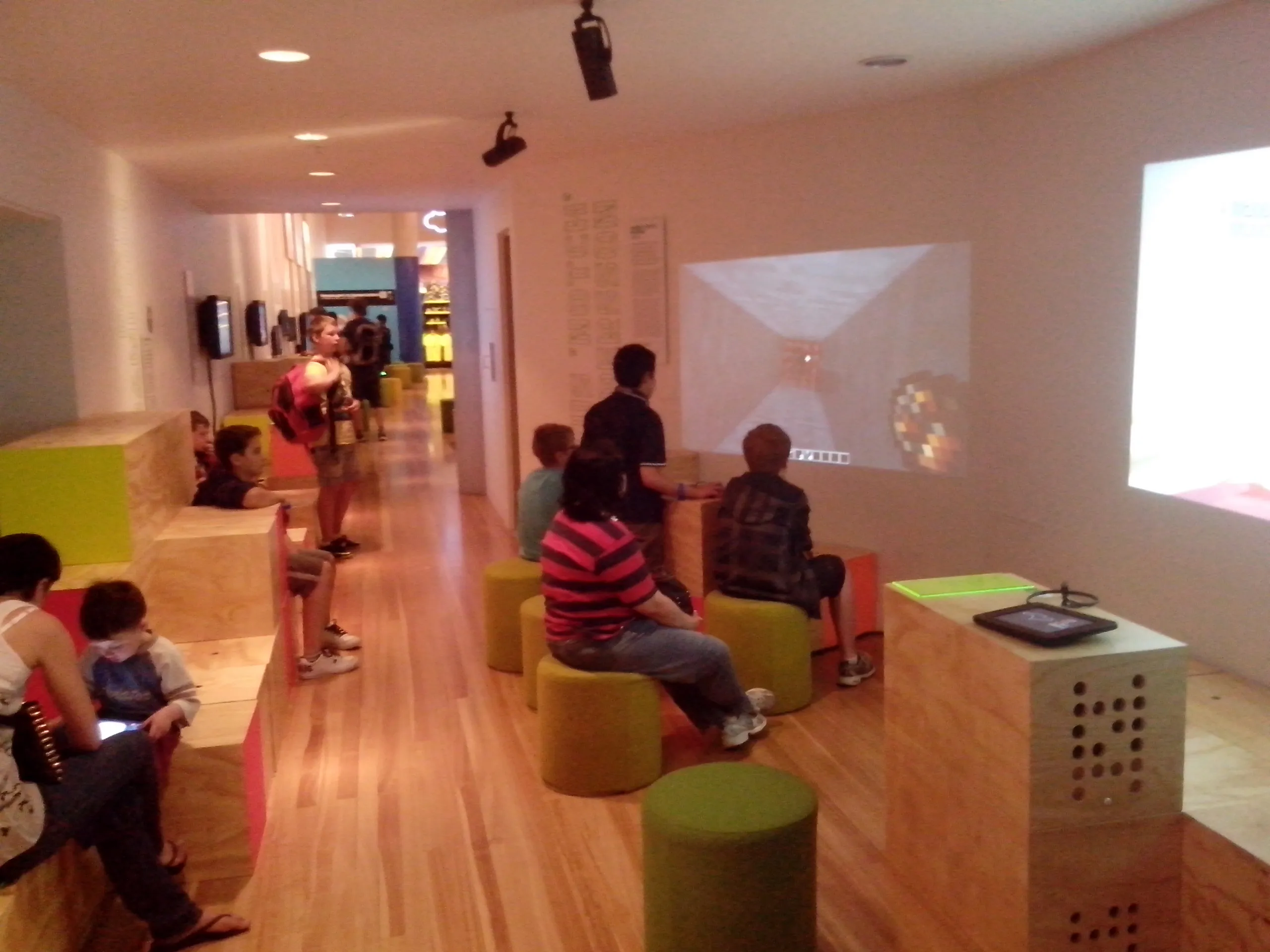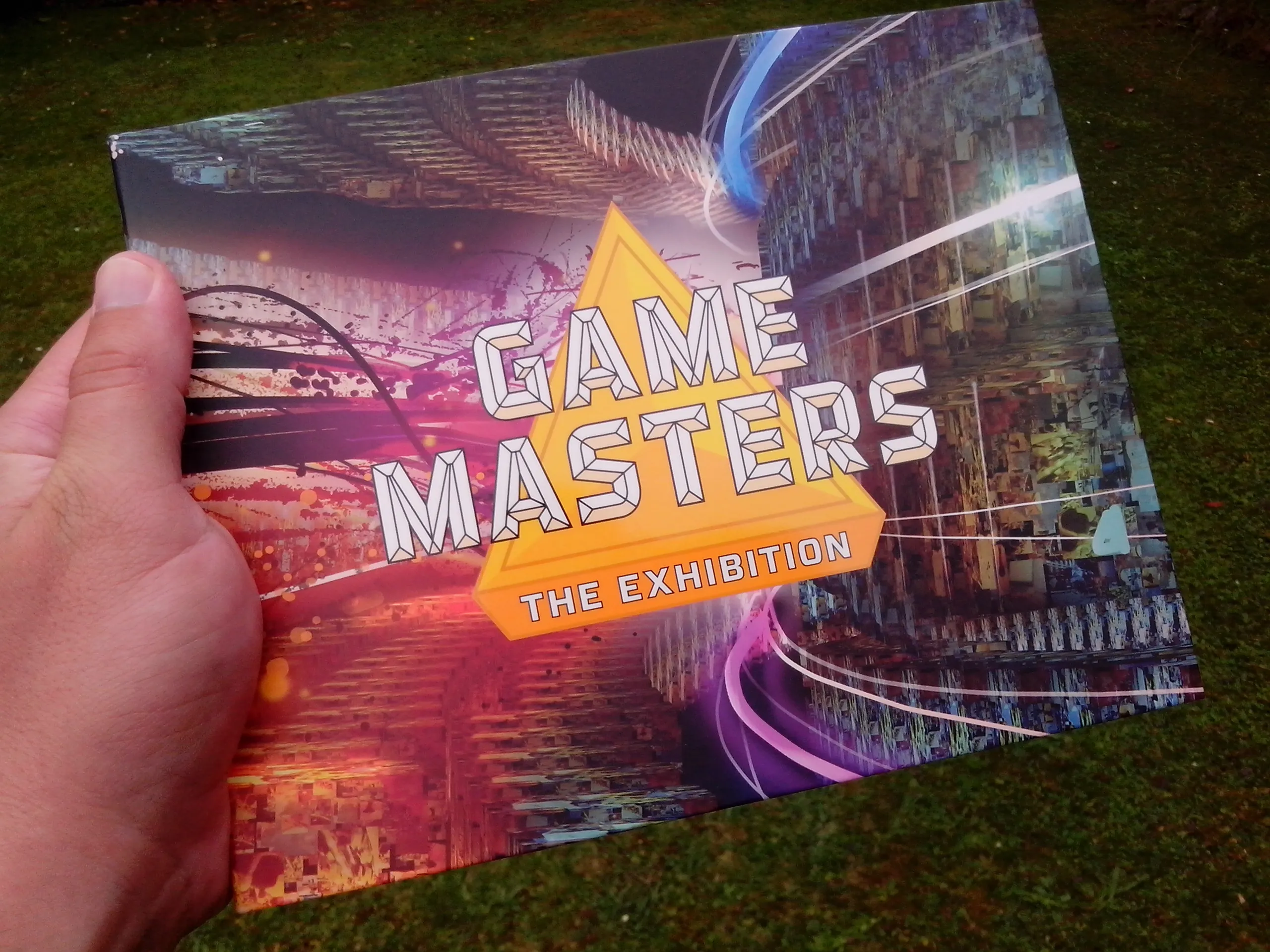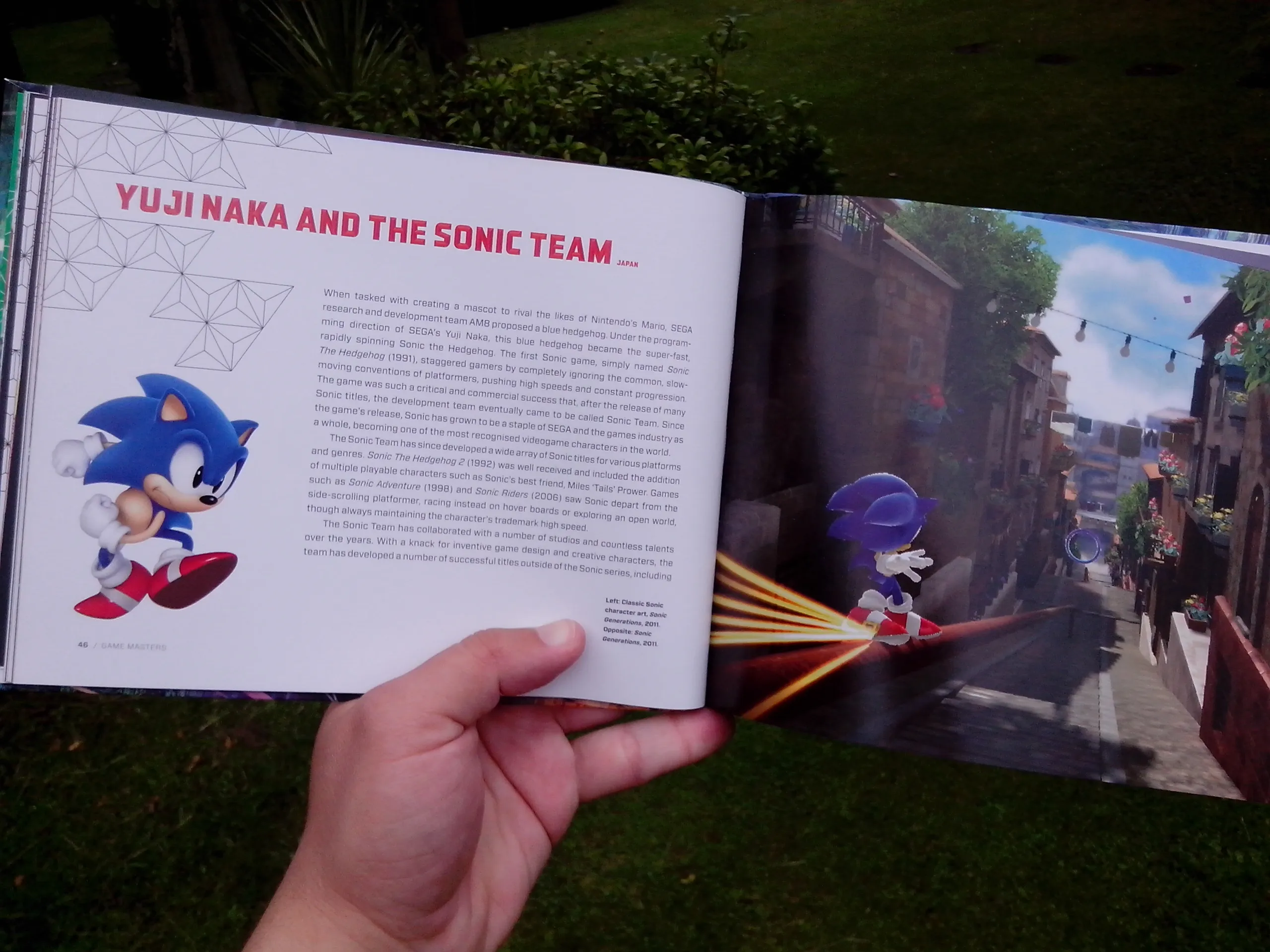Game Masters: Video Games in Museums
Game Masters is an exhibit that is coming off a showing at the Australian Centre for the Moving Image and is now located at The Museum of New Zealand Te Papa for a five month showing. It is promoted as an artistic look at the world of video games, promising to “[take] you into a spectacular gaming universe where imagination and technology combine”. It’s intriguing to wonder how an exhibition dedicated to video games is presented. Is it just a glorified arcade, or something going deeper into the history and legacy video games have crafted over more than 40 years?
The exhibit is laid out like a weaving corridor designed to funnel people through. Next to select games was printed concept art and text information not just about the game, but also detailing creators and the legacy games have left. These were informative to read and made the show something more than just the glorified arcade it could have been. Unfortunately, extremely low lighting in the exhibit (done to reduce glare and reflections on the screens) made these panels difficult to read clearly. For select video game developers, iPads were mounted on stands with headphones attached playing looping video interviews discussing their games. Sadly, these weren’t strongly featured and ending up being scarcely utilised by patrons. That’s unfortunate, because some highlights of the exhibit were watching Tim Schafer talk about how Psychonauts defined the Double Fine style of games and Yuji Naka talk about the programming techniques used to get Sonic running around vertical loops in the first Sonic the Hedgehog on the Mega Drive.
 Arcade machines line the corridor
Arcade machines line the corridor
The first section is a rather narrow path featuring vintage arcade machines. It’s rather fortunate that in this area no games had sizeable queues as there would be very little room to accommodate them. It was really impressive to see a good variety of machines in great condition, although some were out of order. A big highlight was a 30 year old and extremely rare Rip-Off arcade machine, famous for it’s use of vector monitor technology.
Home console and PC games got the largest share of the show. It was perplexing and disappointing to see all legacy Nintendo titles using the Wii’s Virtual Console service rather than the original consoles, something comparable to showing a copy of a paining rather than the original. The Nintendo 3DS was the only handheld featured, and this was limited to a few recent Mario and Zelda games. Rather than taking Nintendo’s approach, all past SEGA titles were running on actual hardware. Along with Sonic the Hedgehog games running on Mega Drive systems, less common titles like Shenmue and Nights into Dreams were presented on Dreamcast and Sega Saturn consoles respectively. It is great to see this extra effort made; a large portion of the attendees would have never used or even seen a Sega Saturn 3D Control Pad, making it a notable feature of the exhibit.
 Sadly, emulated rather than using original hardware
Sadly, emulated rather than using original hardware
Hideo Kojima and, for the most part, all of Konami was represented with a playable unit of the original Playstation game Metal Gear Solid, but unfortunately it was rather ugly and distorted running in stretched widescreen.
There is a small area focused on PC development with sections dedicated to legendary developers Peter Molyneux, Will Wright, Warren Spector and Tim Schafer. Disappointingly, key titles were missing: Tim Schafer’s only playable game was Psychonauts and Warren Spector was limited to Disney’s Epic Mickey, leaving key games such as Grim Fandango, Day of the Tentacle, Brutal Legend, Wing Commander and Deux Ex to reside only in video form. A large collection of Mickey Mouse and other Disney memorabilia were on display to accompany Epic Mickey. A highlight was copies of the original concepts for SimCity and SimCopter hand written by Will Wright on graph paper.
Music and Rhythm games were headlined by a large area devoted to Dance Central 3 with loud music rather annoyingly booming throughout the entire exhibit. Rock Band and other music games had enclosed booths to limit the noise pollution. The Playstation Portable also got its only show with Lumines, making this single unit the only handheld system released more than two years ago to be represented.
 Minecraft is popular with the younger generation
Minecraft is popular with the younger generation
A large open area of the exhibit was a showcase of Independent games. Minecraft was very popular, with large groups of young children gathering around to fly through the world in Creative mode. Staples like Angry Birds and Fruit Ninja got big showings, but the smaller games were tucked away, tethered to the wall on iPads. Playstation games also featured in the Indie section, with legacy titles PaRapper the Rapper and Vib-Ribbon being playable, although the sound level in the room made this very difficult. The remaining Playstation games were recent, with the complete collection of acclaimed titles from studio thatgamecompany along with Braid all proudly featured on big screen televisions.
By the entrance to the exhibit was a store selling gaming memorabilia. Strangely, companion books to Assassin’s Creed and figures from Gears of War being very prominent, despite none of those franchises being mentioned in the exhibit. Beyond figures and books were a range of t-shirts displaying pixel art of various locations around the local Wellington City area.
But possibly the real shining point and best takeaway from the exhibit is the companion book for sale.

The first section of the companion book is divided into the same three sections as the exhibit, each titled Arcade Heroes, Game Changers and Indies. Individual games are not the focus, but the people behind them. Some sections are about development studios, but most pertain to individuals detailing their history and gameography. The middle of the book has two very good and extensive features. The first details the rise and legacy of arcades, dating back to 1966 with the title Spacefall! It’s great to see it go into detail about the trends and achievements the arcade scene has given to the industry. The second feature titled New Voices is about the recent rise of independent games. and how they created heroes and have almost come to define their own distinct style. The last section of the book is probably the most interesting and surprising. Mods and Museums: Gaming the Future of Art and Institutions details the history and potential future of how video games represented as art are exhibited. The history is detailed, dating back to the Hot Circuits exhibit at the Museum of the Moving Image in 1989.
 The research and detail makes the companion book something worthwhile
The research and detail makes the companion book something worthwhile
The book does contain a few errors, although mistaking Alien Hominid for Castle Crashers is an easy mistake to make. It really does stand out as a highlight of the exhibition and an accumulation of all the research undertaken.
Overall, the exhibit is strangely unbalanced. It’s perplexing to see that there are more Lego games on display than Nintendo’s entire console history prior to the Wii. The entire genres of both first and third person shooters is completely omitted, save for a few videos on small screens. This might be done to limit the games to a PG rating, but with those genres being such a integral part of video game history their omission is comparable to censoring Michelangelo’s statue of David. Where is the Super Nintendo, or any handheld system other than the Nintendo 3DS? Big game studios like Capcom and Microsoft have close to no appearances, with the latter limited a Fable game and two Kinect titles. The showing for consoles is also so heavily leaned towards games that are available in stores that it can feel more like a sales expo than a museum exhibit. People will leave wanting to buy Lego Harry Potter than know anything about the legacy of Yu Suzuki.
There are just too many gaps of major titles and genres for this exhibit to truly be considered a representation of the history of video games. But if you’re in the area, consider a visit. You’ll probably play enough rounds of Donkey Kong in to get back the $16 cost of admission. For a real treat, put $29.99 aside for the companion book.